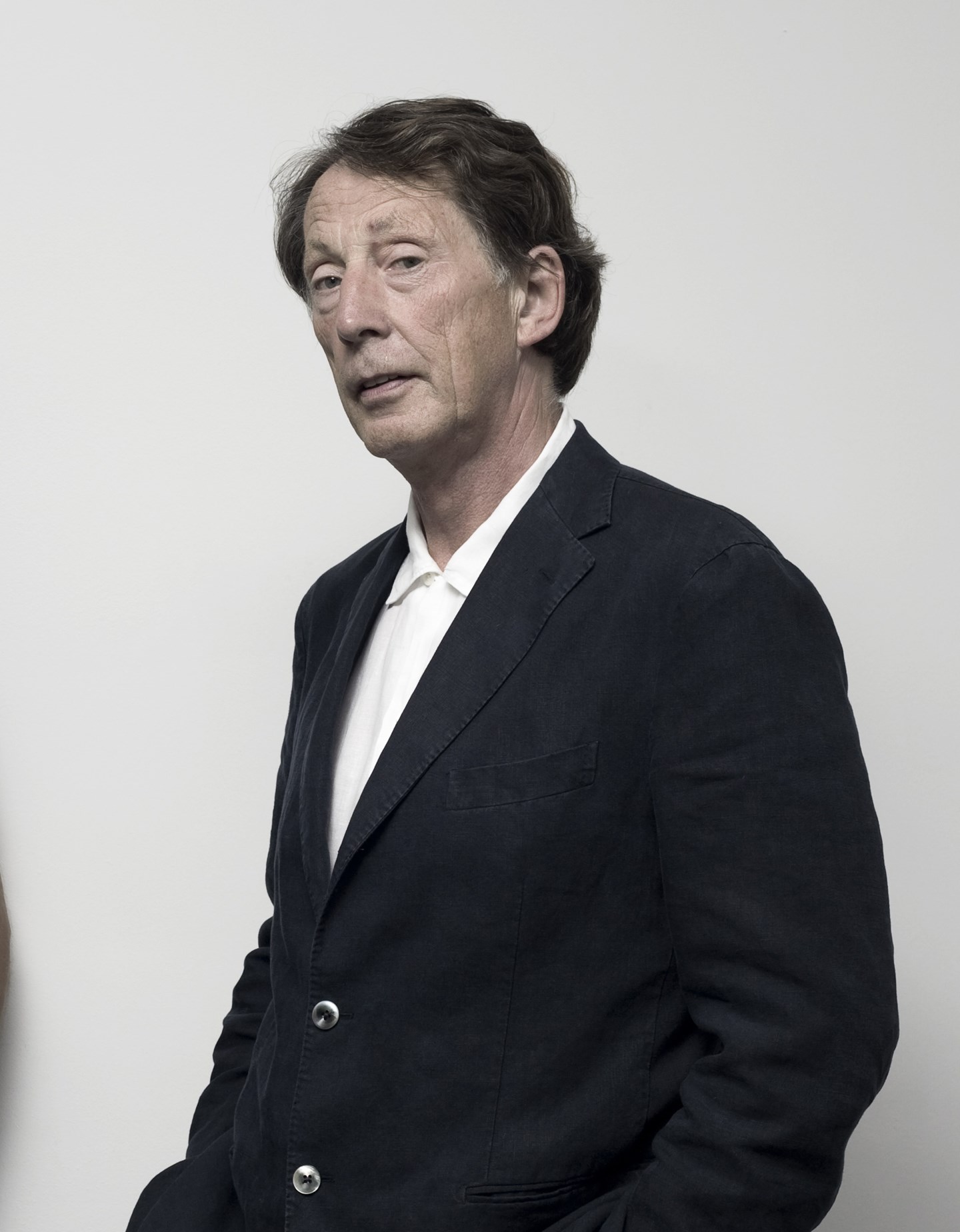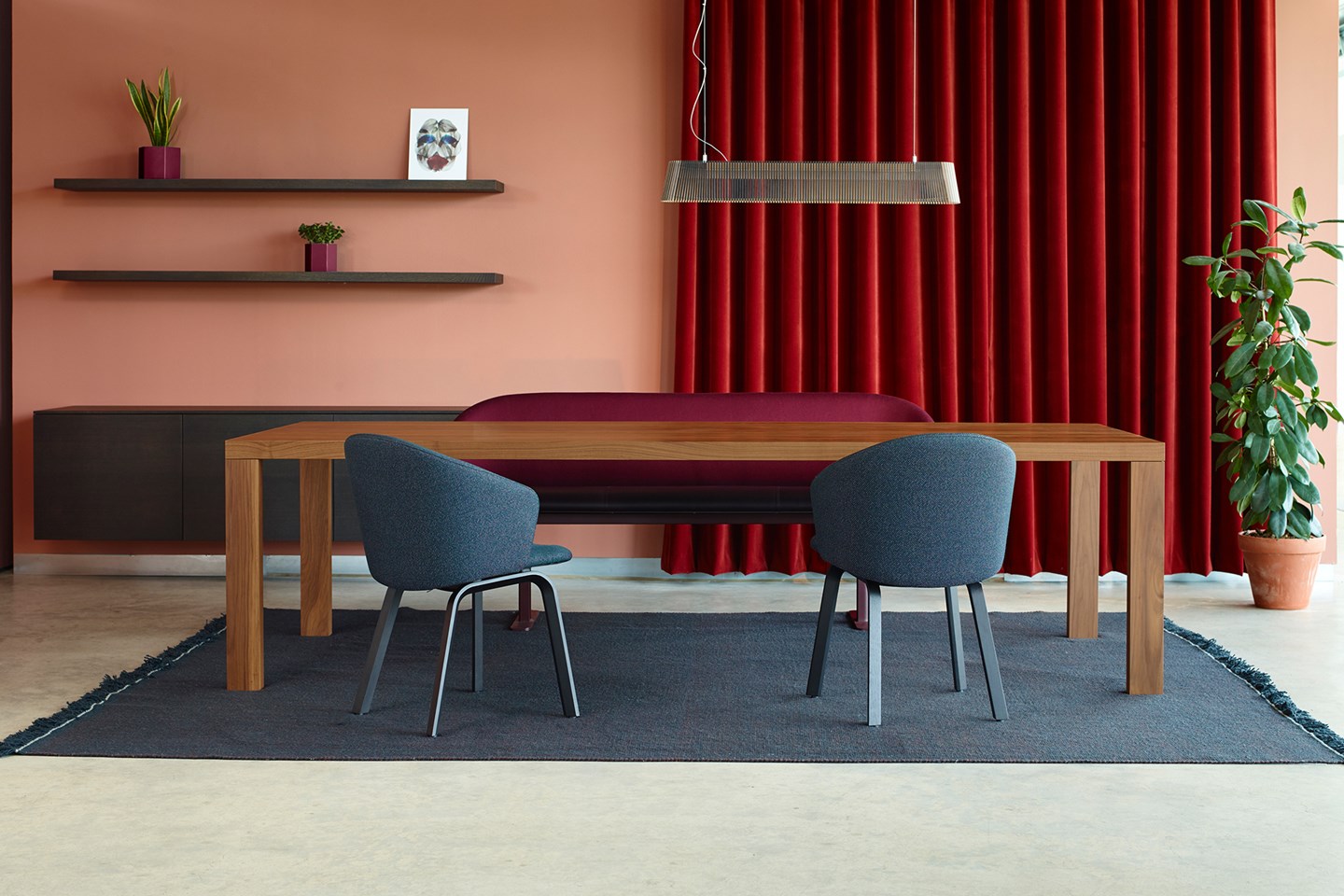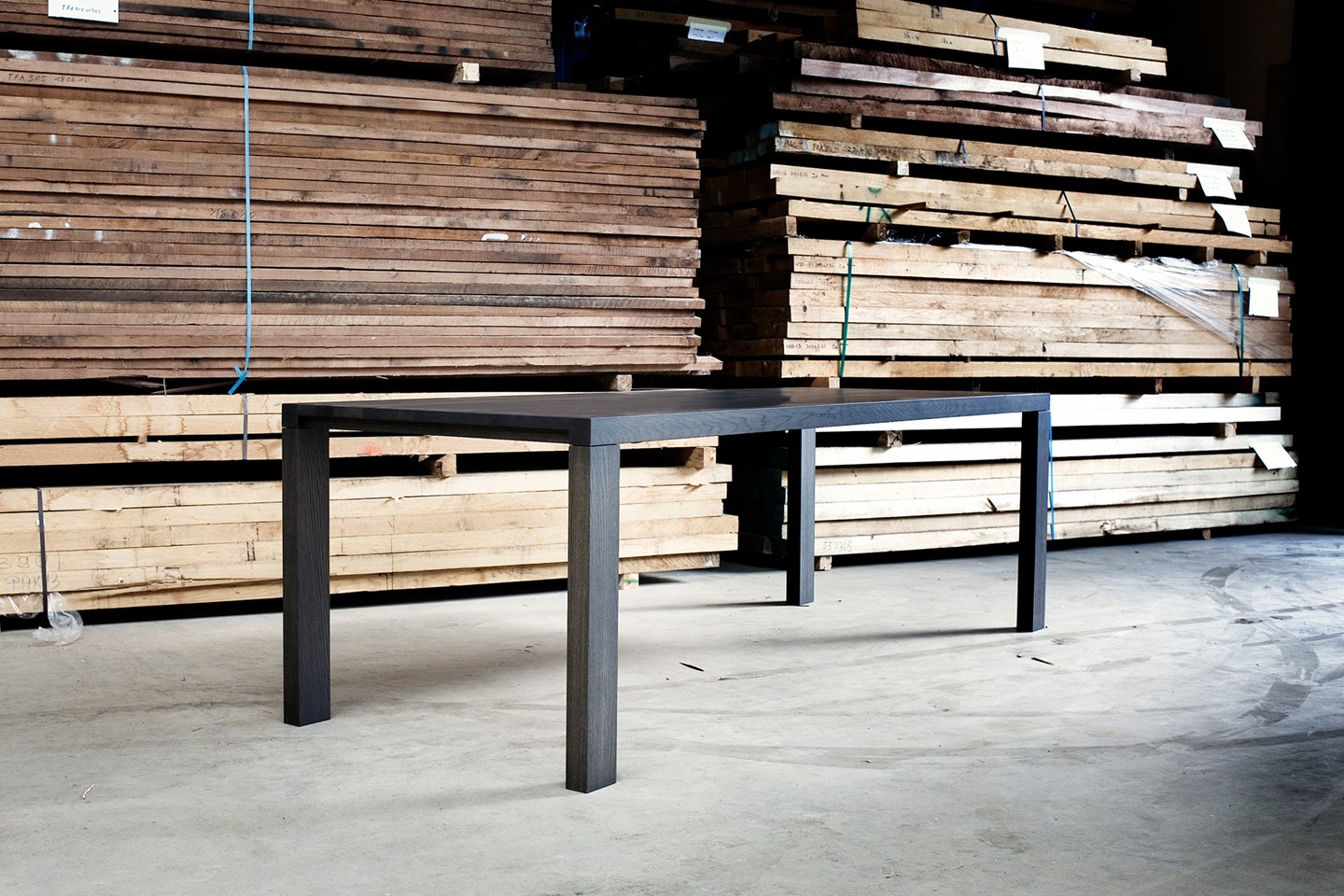Wim van Ast
TIMELESS AND SIMPLE, BUT TECHNOLOGICALLY RICH
His design for the Essenza table has been a classic for nineteen years. Willem van Ast - third generation in family business Arco - speaks about the secret of a good product. “It was a response to the rustic oak table.”’

"Sober, logical, less is more.” These were Essenza’s principles, says Willem van Ast when we met him at Design Post Amsterdam. We were sitting - for that matter not at an Essenza - surrounded by Arco tables, on chairs from the company’s collection. A huge picture of the wooded areas around Winterswijk hung on the wall, a picture from the “Local Wood” campaign implemented by his son and, since 2011, successor Jorre van Ast. N5156.565e646.707 is indicated in the left corner. These are the coordinates for the Kottenseweg in Winterswijk. “I grew up there,” Van Ast points out. And sometimes - he philosophises - he wonders if that environment has influenced his way of thinking and designing. “The dynamism of the city eventually reaches the Achterhoek woodlands, but in a different concentration. It’s more about essence, less about noise.”He can still remember how the Essenza came into being in the late nineties of the last century. It was a time when massive oak tables of rustic design were in demand. But there was also a market for a modern version of the oak table. “That was the context. Ultimately, Essenza is a table with special details, but the appearance remains simple and sober.”’
Van Ast made a robust table without using too much material. “A tree takes a hundred years to grow; you want to deal responsibly with such wood.” For example, the added edging gives the surface optical volume, while the tabletop is less thick. “The legs are knock-down, so that the table could be delivered in a flat package. This was also new for Arco.” Van Ast succeeded - together with the professionals at the Arco factory - to get the best out of the material. The table radiates simplicity, but there is a lot of technology in it. “Tensioners have been incorporated in the tabletop to keep the wood in good shape under all circumstances. A chock in the tabletop provides stability when bridging large lengths.” And that is necessary, especially for the new XL version of the Essenza.

An extra quality involves the processing of the wood. There are interchanging quarter sawn and plain sawn planks, as well as thinner and wider strips. Quarter wood is sawn at right angles to the growth rings, which gives the wood a line motif. Plain wood is sawn parallel to the annual rings, which creates flames in the wood. Van Ast then indicates the tabletop around which we were sitting. The pattern is subtle, with here and there a small flame. The tabletop is composed of strips of various widths that do justice to the “design” of the wood and the tabletop. “Playing with wood structures creates tranquillity in the surface. If you leave this to a machine process, you will obtain fixed widths, repetition and an artificial effect.”’
He thinks and acts as a furniture maker, he admits. I was attending the Wood and Furnishings College when I decided to enter my father’s company. As a designer, I am self-taught. I learned the profession in practice. ‘ From the mid-seventies - when Van Ast took charge of the family business - he decided to make the switch from classic to modern furniture. “It was necessary to make a change, and luckily that worked out well.” Later, he decided to invest heavily in the machinery of the factory in Winterswijk. The company still benefits from this advantage. For the centenary of Arco in 2005, Willem van Ast invited twelve designers to make a design. He challenged them to think about the future of the family business. Ineke Hans, Joris Laarman, Studio Job and Bertjan Pot; it was not the least of designers who participated. “The Slim Table by Bertjan Pot was one of the designs for that project. It shows very well what our future is: strong design, craftsmanship, highquality material but also efficient use of material. The Slim Table is even more essential than the Essenza, if you look at it like that.”’

In 2011, Willem handed over the baton to his son, designer Jorre van Ast. “I still feel very involved with the company, but I am consciously making room for Jorre. We are very similar and do not have to be breathing down each other’s neck.” Jorre is further building on his father’s legacy. He is returning Arco to its essence: making tables. But also to the roots of the company. The Achterhoek woodlands, the craftsmen in the workshop and the source of the wood play an important role in the appearance. In addition to the private market in which Arco is traditionally strong, Jorre is also focusing on the project market. The Essenza plays an important role in this regard. “The fact that a company like Apple has chosen the Essenza for the new head office in America fills me with pride and joy.” Apple was convinced by the “self-control in the design”, and that is a big compliment. Hundreds of Essenza’s have since been manufactured for the building’s office spaces, along with a number of specially designed pieces of furniture for Apple. “And that’s how Essenza is strengthening Arco’s position on the international and project market; I could not imagine anything nicer.”’